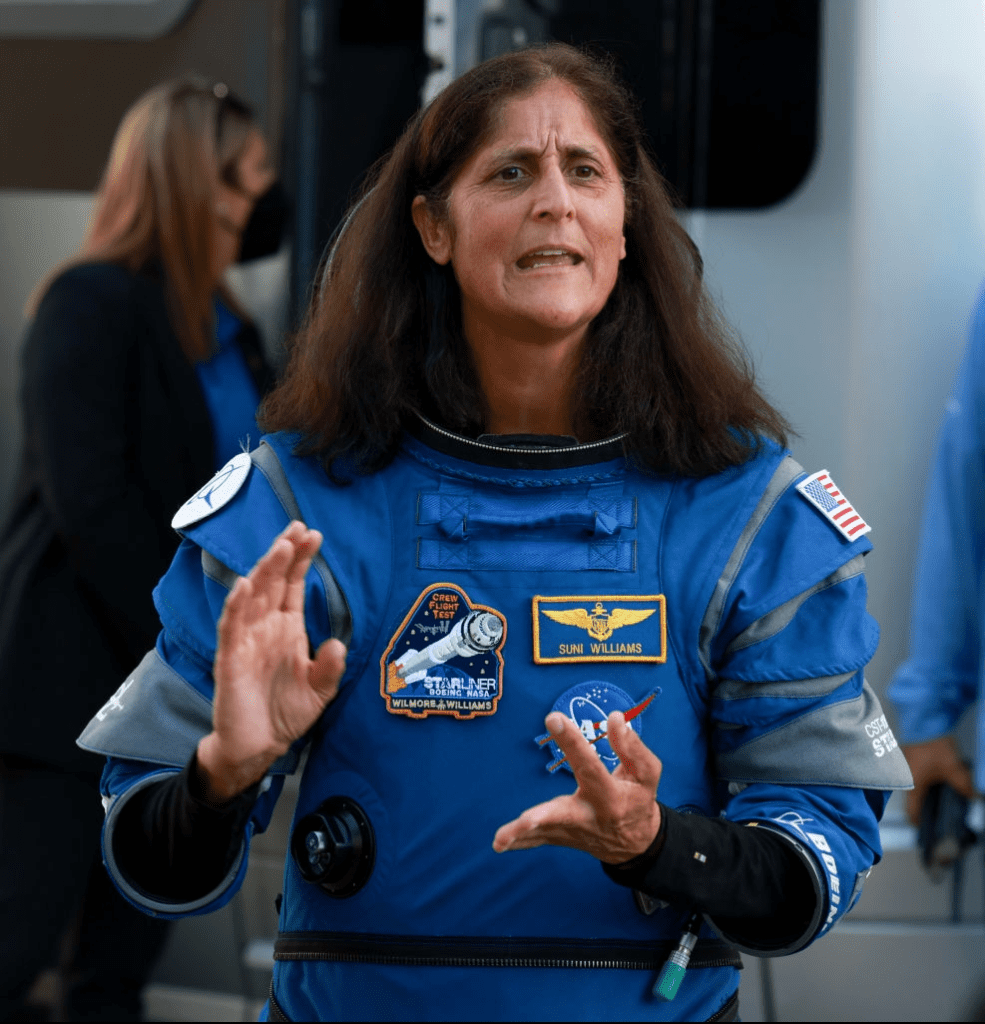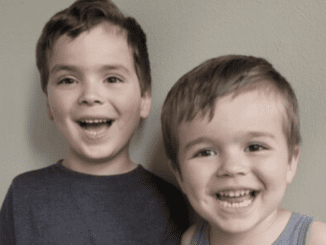When astronauts venture into space, they take on a range of risks—both known and unexpected. Recently, the story of two astronauts marooned aboard the International Space Station (ISS) has caught public attention. Sunita “Suni” Williams, 59, and Barry “Butch” Wilmore, 61, were originally slated for a short eight-day mission. But, 150 days later, they find themselves waiting for rescue, unable to return home due to significant technical malfunctions with their spacecraft. As concerns grow over the toll prolonged space habitation is taking on their health, newly released images have fueled a heated discussion online.

Concerns have been raised about Suni Williams following a new image surfacing. Credit: Joe Raedle / Getty
The Unexpected Mission Extension: What Went Wrong?
The journey began on June 5 when Williams and Wilmore launched aboard Boeing’s Starliner. The mission quickly veered off course due to severe technical problems, including thruster failures and helium leaks. The issues with Starliner were significant enough to force a critical decision: attempt a risky return in a compromised spacecraft or stay on the ISS until a safer option became available. They chose to remain aboard the ISS, hoping for a safe return with the SpaceX Dragon capsule, now scheduled for February 2025.

NASA has confirmed that the Starliner will return to Earth uncrewed as Boeing works to resolve the spacecraft’s issues. NASA Administrator Bill Nelson assured that Williams and Wilmore’s safety is the top priority, stating, “NASA has decided that Butch and Suni will return with [SpaceX’s] Crew-9 next February, and that Starliner will return uncrewed.”
The Health Impacts of Extended Space Missions
The physical effects of living in space for extended periods are well-documented. Microgravity environments impact everything from muscle mass and bone density to cardiovascular health and vision. And for astronauts unprepared for an extended stay, the risks can be even more severe. Prolonged exposure to microgravity can lead to muscle atrophy, a decrease in bone density, and fluid shifts in the body that often result in facial puffiness.
Newly released photos of Williams have raised concerns, as her appearance seems visibly affected by the extended time in space. In particular, her sunken cheeks and an apparent reduction in body weight have led experts and the public alike to question how well her health is holding up during the unexpected mission extension.
It looks like those two American astronauts stuck in the ISS are not in good health, especially Suni Williams.🤔 pic.twitter.com/0bO64DUXeu
— ShanghaiPanda (@thinking_panda) November 1, 2024
Social Media Reactions and Expert Insights
Social media users were quick to voice their concerns after the recent photos of the astronauts circulated online. Some were worried about Williams’ appearance, with one user commenting, “Suni Williams’ condition doesn’t look good,” while another observed that both astronauts seemed affected by their time in space. Dr. Vinay Gupta, a health expert, weighed in, suggesting that Williams may be facing a calorie deficit and total body weight loss, noting, “Her cheeks appear a bit sunken—and usually, that happens when you’ve had total body weight loss.”
Dr. Gupta, however, clarified that although the visible effects are concerning, they don’t indicate a life-threatening situation. “I don’t think she’s quite at a place where her life’s in danger,” he stated, “But I don’t think you can look at that photo and say she has a healthy body weight.”

Sunita “Suni” Williams speaking from the ISS. Credit: Kevin Dietsch / Getty
Psychological Strain of Space Missions
Physical health isn’t the only challenge astronauts face; psychological strain is another pressing issue. Isolation, confinement, and the knowledge that a return to Earth is months away can take a mental toll on even the most experienced astronauts. Fortunately, Williams and Wilmore have support from NASA’s psychological health teams, who ensure regular communication with family and loved ones and offer mental health support. Wilmore recently expressed gratitude for these support systems, saying, “We’re very fortunate to have the Space Station and the option to stay safe while Boeing addresses the technical issues with Starliner.”
Life on the ISS: How Do Astronauts Cope with Extended Stays?
Life aboard the ISS is a daily routine of maintenance, scientific experiments, and exercise—activities designed to help astronauts adapt to the microgravity environment. Astronauts must adhere to a strict schedule of exercise to counteract muscle atrophy and bone density loss. They also rely on nutrient-rich diets and health monitoring to keep track of any changes in their physical condition.
NASA’s stringent protocols for health and safety are in place to ensure that astronauts can handle the stressors of prolonged spaceflight, but the reality of daily life in space remains challenging. Extended missions in an environment as isolated and extreme as space bring unique health risks, and every additional day increases the demands on the body.
Butch and Suni will continue to contribute to @ISS_Research aboard the station before heading home in a @SpaceX Dragon spacecraft. Read about their work so far: https://t.co/zy3B0KXzEP
— NASA (@NASA) August 24, 2024
Follow our blogs for the latest @Space_Station and #Starliner updates: https://t.co/M7G4xLhChJ pic.twitter.com/0wX2xeom9V
What Lies Ahead: The Wait for Crew-9’s Return Mission
As they await SpaceX’s Crew-9 mission, which is set to bring them back in February 2025, Williams and Wilmore are maintaining resilience and professionalism. During a recent press conference, Wilmore acknowledged the situation, stating, “When you have issues like we’ve had, there are changes that need to be made. Boeing is fully committed to addressing these challenges.” Reflecting on the risk and reward of pioneering new space technologies, he added, “We found some things that we just could not get comfortable with putting us back in the Starliner.”
Their extended stay on the ISS, while unintended, underscores the importance of having multiple spacecraft options and backup plans. Space exploration is inherently risky, and this experience highlights how crucial it is for future missions to have contingency plans in place.
Conclusion: Pioneering Space Exploration, with Real Risks and Real Rewards
The story of Sunita Williams and Barry Wilmore is a testament to the risks astronauts take and the resilience they show in the face of adversity. While concerns about their health are valid, NASA and SpaceX are committed to ensuring their safe return, and Boeing is working to address the Starliner’s issues. Their ordeal reminds us of the challenges and unpredictability inherent in space exploration—a field that continually pushes the boundaries of human resilience and technology.
As they wait for Crew-9’s rescue mission, Williams and Wilmore continue to embody the spirit of exploration, balancing the demands of science with personal sacrifice. When they finally return to Earth, their story will serve as a reminder of the bravery and dedication required to explore beyond our planet, even when the risks are high and the journey uncertain.


